Healthy Grocery Shopping Tips

Healthy Grocery Shopping Tips (For When You Can’t Avoid the Grocery Store)
* This article contains affiliate links. For more information, please read my Affiliate Disclosure.
When grocery shopping, remember that not all food is created equal! Here are a few healthy grocery shopping tips to help you choose better!
* * *
If you’ve been reading this blog for any length of time, it probably comes as no surprise that I don’t exactly love relying on the grocery store to provide for me and my family, and that sentiment is only getting stronger as time goes on and the world gets more unpredictable.
Between supply chain issues, rising food costs and the plethora of unhealthy ingredients, chemicals and GMO foods on grocery store shelves, I’d rather toil in the garden and kitchen all spring, summer and fall to grow and preserve my own food than have to rely 100% on grocery stores to provide for me.
Aside from the desire to be as self-sufficient as possible, one of the main reasons we choose to grow our own food is to ensure the quality of the food that we eat. We grow 100% organic and cook with real, whole food ingredients because health is a top priority for our family.
All too often, taking care of our health gets left out of the conversation around self-reliance, but it’s much harder to be self-reliant if you don’t have your health, so it’s actually a really important aspect of self-sufficiency and independence.
But our family is admittedly nowhere near completely self-sufficient. Very few people truly are. We all need to go to the grocery store sometimes. After all, even Ma Ingalls had to go to town for provisions from time to time!
That being said, when I do go grocery shopping, there are a few important things that I always consider before I add anything to my cart.
Produce Your Own and/or Buy local whenever possible
Before I go on, I will say that I still try to shop local first and foremost.
We’ve switched to buying all of our meats locally. This is one area where I’ve made a commitment to purchasing only local, ethically-raised, grass fed/pasture raised meats (save for the odd pack of bacon, deli meats or organic whole chicken, which we usually get from Costco).
Besides our meat, we never purchase eggs from the grocery store since our small flock of backyard laying hens provide all that we need. If we did run out, I would only source local free-range eggs for the same reasons as listed above. If your only option is the grocery store, opt for organic, free range eggs whenever possible.
Oh, and I also never really buy bread anymore. I typically bake my own bread, so we don’t tend to buy loaves of bread from the grocery store. Every now and then I do buy bread products from the grocery store though.
Aside from that, in the summer we literally never buy fruits and vegetables from the grocery store as we grow most of our own produce and source everything else locally. However I know we’re lucky to live somewhere where there’s a big farming and local food culture and that not everybody has access to these things nearby.
Save for the odd “exotic” ingredient like bananas or pineapples, we get pretty much everything from as close to our home as possible in the summer and preserve it to eat throughout the winter.
But come late winter/early spring, a lot of the food we preserved the previous season starts to run out, so this is the time of year (between now and late spring when the first fruits and vegetables are ready for harvest in our garden), when we tend to rely on the grocery store the most.
My advice is always to produce as much as you can, supplement with organic, whole foods from local farms and food producers and then fill in the gaps with food from the grocery store. But I understand that everyone’s situation is different, so I just encourage you to make the best decisions for you and your family based on your unique situation and the resources you have available to you.
Related: 10 Tips to Help You Save Money At the Grocery Store
3 Healthy Grocery Shopping Tips (For When You Can’t Avoid the Grocery Store)
My thought process around food has evolved a lot over the years –especially in the years since we first started homesteading– and it continues to evolve all the time. I’ve upgraded my food choices slowly but surely, one-by-one, day after day and year after year. And the more I learn, the more these food choices evolve.
Still, I am in no way perfect with all of our food choices all of the time, and I’m still learning about the dangers and downsides of some foods while continuously learning about the health benefits and advantages of others.
Likewise, wherever you’re at in your health and/or homesteading journey, I want you to know that you don’t need to be perfect either. Real, sustainable improvement in any area of life happens little by little, one step at a time. So go easy on yourself!
That being said, I believe in doing the best we can with the knowledge and resources we have. This applies to all sorts of things, but for me, it’s extra important when it comes to what we put in our bodies and what we spend our money on.
In general, I’m pretty intentional about the food choices I make for myself and my family, but I also like to keep things simple (ie. I don’t follow any restrictive or complicated diets or rules). When it comes to the grocery store, there are really just three main things I make sure to look for or consider when grocery shopping…
1. What are the ingredients?
Whenever possible, I opt for whole foods and staple ingredients (ie. fruits, vegetables, meats, grains, etc.) But I do purchase packaged foods, condiments and other processed food items from time to time. When I do, the first thing I check for is the list of ingredients.
This might seem obvious, because (duh) I just rambled on for multiple paragraphs about how I care about what we eat. But I’ve learned that many commercially produced processed foods can be pretty deceiving, and if you’re not diligent about checking the list of ingredients, you could very easily purchase something that looks healthy, but really isn’t.
This has mostly to do with smart marketing and packaging, as well as where things are located in the grocery store. For example, there are many things in the “health food” aisle that really aren’t very healthy for you at all.
Some of the ingredients I try to avoid at all costs include any type of food additives and artificial sweeteners, including (but sadly not limited to):
- High Fructose Corn Syrup
- Monosodium Glutamate (MSG)
- Synthetic Food Dyes (Blue 1, Yellow 5 & 6, Red 3 & 40 are common ones to avoid)
- Artificial Sweeteners (aspartame, sucralose, saccharin, etc.)
- Artificial Flavours
- Natural Flavours (they may be derived from natural foods, but they’re still extracted in a lab)
- Xantham Gum
- Guar Gum
- Propylene Glycol
- Sodium Nitrite
- Sulfites
- Carageenan
- Maltodextrin
- Dextrose
- Phosphates (sodium phosphate, calcium phosphate, etc.)
I’m sure there are many others ingredients that I’m missing, but that’s a pretty good place to start in terms of ingredients to avoid.
I also try to avoid high amounts of added sugar. Especially if sugar is the first or second ingredient listed, I generally try to avoid it. I also prefer organic cane sugar whenever possible.
Same goes for salt; I try to avoid it in excess and opt for sea salt or simply “salt” over sodium (ie. sodium phosphate or sodium chloride), and definitely over MSG!
When it comes to oils, I avoid highly refined vegetable oils, including canola oil, grape seed oil and sunflower oil. These types of oils are often extracted with chemical solvents and refined at high heat, which chemically alters their composition. They’re also high in Omega-6 fatty acids, which can cause dangerous and even chronic inflammation in the body. Whether I’m purchasing oils for my own home cooking or checking the ingredients list on a processed food, I try to stick to healthier cold pressed oils like olive oil, avocado oil and coconut oil.
When I’m reading the list of ingredients on a food label, I look for simple, whole, natural ingredients. The fewer the ingredients, the better.
For example, I went to the store to buy sour cream the other day, and almost every brand that I checked had a laundry list of ingredients including thickening agents like guar gum, xantham gum, carrageenan, carob bean gum and modified corn starch, sodium phosphate, propylene glycol, cellulose, sodium phosphate and sodium citrate.
After checking the ingredients on a handful of different brands, I finally found one brand’s premium version of sour cream that listed only cream, milk, skim milk powder, bacterial culture and microbial enzyme. That’s as close to all-natural sour cream as you’re probably going to get in the grocery store, so I opted for that one.
However there was literally nothing to distinguish this sour cream from all the rest aside from the list of ingredients. It took me consciously checking the list of ingredients on each brand to know that this was by far the healthiest, most natural sour cream product of the bunch. Plus, it was the same price as all the others to boot! But honestly, even if it was a couple bucks more, for me it’s worth the extra investment in my (and my family’s) longterm health.
Clearly, checking the list of ingredients in processed foods is super important, but it’s worth mentioning because too many people are caught up in the health claims on the front of the package or with the nutrition facts on the back, but they fail to consider the actual ingredients and the sources of the nutrition in the foods they’re eating.
While certain health claims can and should be important when it comes to processed foods (ie. I prefer to choose organic and/or non-GMO verified foods when given the choice), they’re often more of a marketing ploy than a reliable way to tell if a particular food item is actually healthy.
As for nutrition facts, they’re certainly important if you’re trying to stick to a particular diet like low-sugar, low-sodium, keto, etc. However I generally don’t even look at the nutrition facts. For me, the ingredients list is the best indicator of whether or not a food product is healthy or not.
2. Is the food organic?
Just as important as what’s in our food is what’s not in it. Chemical pesticides, herbicides and genetically modified foods are high on my list of ingredients to avoid, so I always opt for organic foods whenever possible.
According to the Environmental Working Group, “nearly 70 percent of the fresh produce sold in the U.S. contains residues of potential harmful chemical pesticides.”
When choosing produce, I always try to avoid the dirty dozen (the 12 foods that typically are found to have the highest concentration of pesticides and chemical residues).
The Dirty Dozen includes:
- Spinach
- Kale
- Apples
- Strawberries
- Peaches
- Nectarines
- Grapes
- Cherries
- Pears
- Tomatoes
- Celery
- Potatoes
I also only buy organic lettuce, broccoli, herbs, carrots, peppers and garlic.
I’m a bit more lenient with some of the foods on the “clean fifteen” list; Produce that has been found to have the lowest concentration of chemical residues. These include:
The Clean Fifteen includes:
- Avocados
- Onions
- Pineapples
- Asparagus
- Papayas
- Cantaloupe
- Honeydew Melons
- Cabbage
- Kiwi Fruits
- Eggplants
- Sweet Peas
- Mushrooms
- Cauliflower *
- Broccoli *
- Sweet Corn *
(The foods marked with an asterisk (*) are foods that I still personally try to buy organic. While I can peel the outer layers off a cabbage to avoid any pesticides that were sprayed, I can’t do the same with a head of broccoli or cauliflower, so I tend to opt for organic. Likewise, sweet corn is often genetically modified, so I typically steer clear of conventionally produced corn on the cob).
As for professed and packaged foods, I look for organic products as well. This isn’t always possible, but I’ll almost always choose organic ingredients when I have the option.
When it comes to dairy products, I do tend to buy conventional. However in Canada there are much stricter rules about how our milk and dairy products are produced and sold, including a complete ban on growth hormones and antibiotics. At almost double the price for certified organic dairy products, this is one area where we do still tend to buy conventional. However if I lived in the US where the dairy products are not as regulated, I would definitely choose organic whenever possible.
Not only are organic foods healthier for us, they’re also healthier for the planet.
Pesticides and herbicides have detrimental effects on the environment and on the creatures that inhabit it, most notably bees and other pollinators, which are responsible for roughly one third of global food production [source].
And don’t get me started on Monsanto and GMOs. If you’ve never seen the documentary Food Inc. or read Michael Pollan’s Omnivore’s Dilemma, I highly recommend both as they were each catalysts for me when I first started exploring homesteading as a viable lifestyle “alternative.”
I believe we vote with our dollars, and so I always try to cast a vote for health, people and planet. This definitely applies to grocery shopping, among many other things.
Related: 3 Ways to Get Free Organic Food (Without Growing It Yourself)
3. Where does the food come from?
As mentioned above, I’m a big believer in eating as locally as possible. If I can’t grow something myself, I typically try to source it locally from our farmers market or direct from local farms. But this isn’t always possible, so when I have to buy food from the grocery store, I try to be mindful of where it was produced and how far it travelled.
I generally try to source food from as close to home as possible, so even if something isn’t necessary local to my community, I’ll still choose food from elsewhere in my province first, and after that I’ll look for either Canadian, American or Mexican produced next, then South American, European, African and finally food produced in Asia.
In general, Asia (China, specifically) tends to have some of the worst food safety practices and the highest use of pesticides in the world. According to this article from Stanford University, “China is the world’s largest consumer of agricultural chemicals, using more than 30 percent of global fertilizers and pesticides on only 9 per cent of the world’s crop land.” This equates to almost 1.8 MILLION tons of pesticides sprayed on Chinese crops each year, according to the Food and Agriculture Organization of the United Nations.
While not all locally-produced foods are necessarily organic, they do generally tend to be safer than a lot of conventionally-produced foreign foods coming from places with very little regulation on pesticide use. Not to mention, the less miles food travels, the better it is for the planet.
To learn more about my philosophy on local food and tour a few of my favourite local farms with me, check out the YouTube video below:)
Other Things To Consider When Buying Food
While those are the three main things that I look for in when buying food from the grocery store, there are also a few other things that I consider (and I hope you will too!)
Ethically Raised Meats, Eggs & Dairy
I already touched on this above, but it’s worth mentioning again, because while we don’t tend to buy meat from the grocery store, I know many people do.
When purchasing meats and animal products I try to look for words like “organic,” “grass-fed” (and grass-finished), “pasture-raised,” “free range,” “hormone-free,” “no antibiotics,” etc.
While some of these catchphrases can be deceiving (and warrant a blog post all their own), they’re a good place to start.
Local Vs. Organic (And What’s With All the Packaging???)
Sometimes local food isn’t organic, and sometimes organic food isn’t locally produced.
When faced with the choice between organic OR local, I usually choose organic. However if the food falls into the “clean fifteen,” I will sometimes opt for local over organic. It’s a bit of a toss up and it’s a conundrum that confounds even the most discerning among us. Find what works best and sits right for you.
Another thing I consider is how much packaging comes with a particular food item. I try to avoid single use plastics like the plague, but somehow they still they find their way into our home on almost a daily basis. Still, packaging is something I’m conscious of for environmental reasons.
Plus I can’t STAND how quickly our recycling box overflows with plastic packaging when we’re not careful! It drives me BANANAS (just ask my husband) and I actually get a bit offended when I’m forced to accept a bunch of plastic packaging or bags with my groceries.
This is one major downside to eating organic foods from the grocery store: SO. MUCH. PACKAGING!!!
While this isn’t always the case, I often find that organic produce comes wrapped in more packaging than conventionally-grown produce, which poses another moral dilemma for folks like me.
Luckily we have an awesome zero waste store in our town called the Local Refillery where you bring your own jars and purchase in bulk. This is where I prefer to do my shopping for things like spices, flour and baking ingredients, nuts, seeds and bulk ingredients, as well as refillable hand soap and shampoo, etc. Wherever you live, it’s worth checking to see if there’s a refillery or a zero waste store near you!
When it comes to certain ethical dilemmas or even having to choose between what you can afford and have access to and what’s best for your health, there just aren’t any “right” or “wrong” answers in some cases. It just comes down to what matters most to you, what you’re most comfortable with and what resources you have.
Like I say, we vote with our dollars, and the money we spend on food should also be considered an investment in our health. No matter how much (or how little) money you have to spend, there’s always something small you can do to improve your family’s health, or at the very least avoid the very worst processed foods lurking on grocery store shelves.
At the end of the day, my best piece of advice for you is to continue learning about healthy food choices that also align with your own personal ethics and values, and then head to the grocery store armed with that knowledge. And of course, don’t forget your shopping list;)
If you have any of your own healthy grocery shopping tips or guiding philosophies that inform your decisions at the grocery store, I’d love to hear them! Drop a note in the comments below and let’s keep this important conversation going!

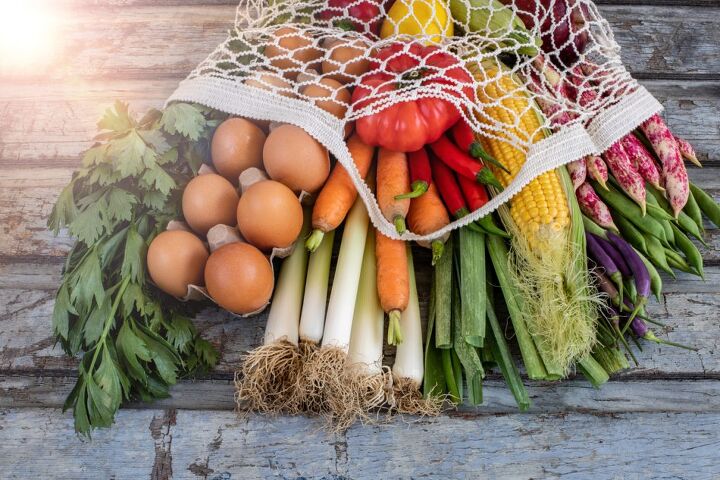


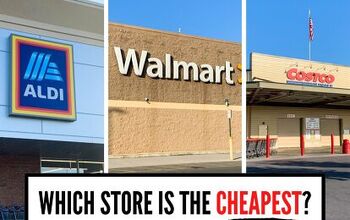


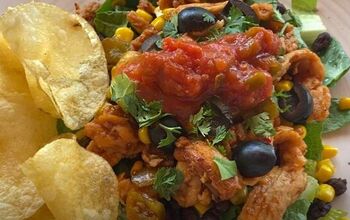

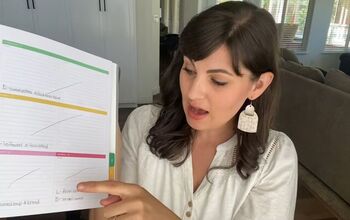

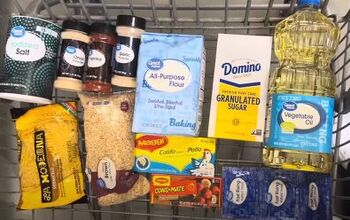

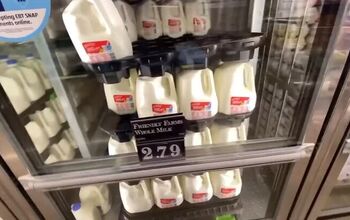

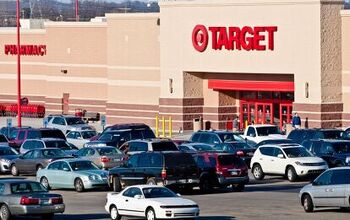



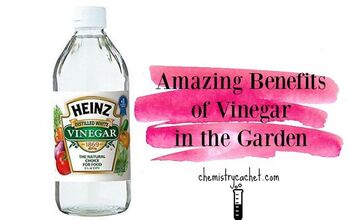

Comments
Join the conversation
This is great information but when you’re on a fixed income organic is too expensive. I’ve gone to the farmers market and paying $3 for a tomato is ridiculous. If I had more income coming in I would love to go organic but unfortunately I can’t, but I do watch what I put in my cart at the store and I try to buy organic when it’s on sale. Thanks for the information.
Excellent information! People can start with baby steps, it doesn't need to be all or nothing, every little bit helps.
I shop a number of different stores for what we need. Know the prices in my area and shop for the highest quality food at the best price. And at a traditional, big box, chain grocery store I only shop the perimeter of the market. And yes, always read the labels. It's a little time consuming at first, but once you get into the groove, it goes much quicker and worth the initial time investment.
I cook from scratch and when time permits, I do batch cooking and freeze some for the days I get home too late or just so tired I just can't cook.
Where I live, the summers are brutal and keeping anything alive is a challenge and we are in a severe drought and every drop of water counts. My poor fig trees are really suffering. The fruit they produce is small and never really gets ripe. And we don't have rain often, hence the drought.
Right now eggs and butter are outrageous and have had to resort to other methods of cooking to accommodate the lack of both these items. I can't afford $7 for a dozen eggs. Cheap American butter is about $5 and up per pound and better quality is even higher. European butter is even more outrageous.
As they say, necessity is the mother of invention and rings true here. Just do the best one can with whatever budget they may have. There are many great tips in this post and everyone can find something they can apply to their shopping routines.
Thanks for sharing!